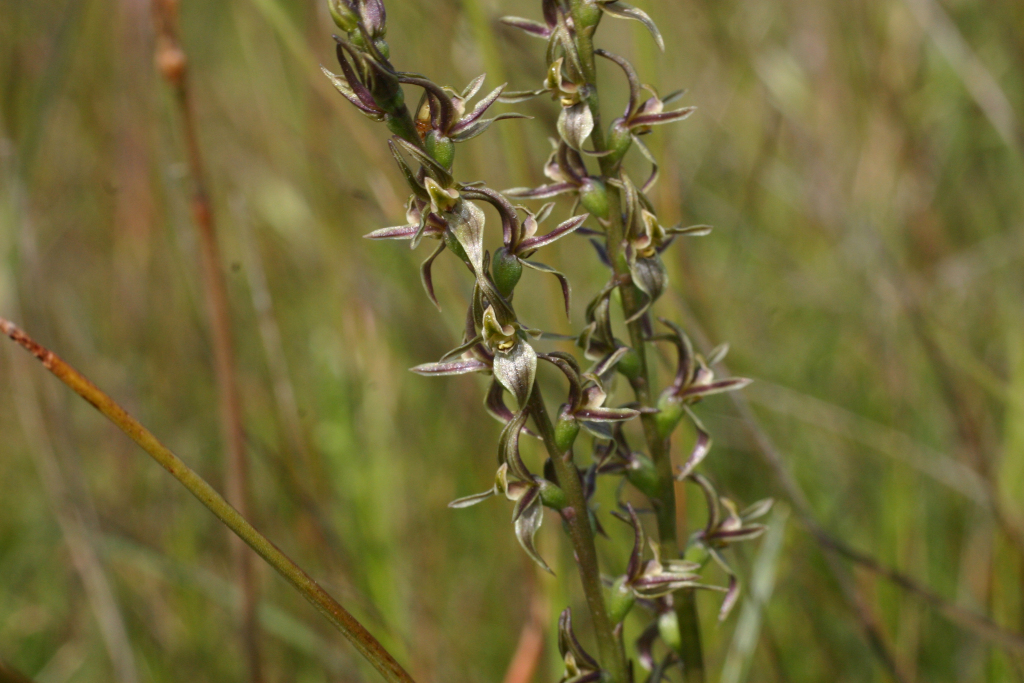Prasophyllum suaveolens
D.L.Jones & R.BatesFlowering stem slender, to 25 cm tall, solitary. Leaf-blade to 10 cm long, 2–3 mm diam. at base, apex erect, often partially senescent at flowering time. Flowers 10–25, small, fragrant, green to yellow-green with reddish markings, in a moderately loose spike 5–10 cm long; ovary turgid, obovoid, c. 3 mm long; sepals 3–5 mm long, dorsal sepal ovate-lanceolate, deflexed, lateral sepals linear-lanceolate, free or united for half their length, more or less parallel, recurved; petals narrow-obovate, 4–4.5 mm long. Labellum sessile, ovate-lanceolate, 4–5 mm long, porrect at base, recurved at about 90 deg. near middle, lamina greenish to pinkish, margins entire or slightly irregular; callus plate smooth, fleshy, raised, channelled, dull green, extending almost to the labellum apex. Column appendages linear-oblong, c. 1 mm long, truncate or emarginate. Flowers Oct.–Nov.
Wim, VVP, OtP, DunT, HSF. Endemic to the basalt plains of south-western Victoria where it grows in grassland and grassy woodland on brown water-retentive clay loams.
A poorly known species that is critically endangered due to massive habitat loss.
This species is part of a complex of similar looking taxa, and has been confused in particular with the sympatric Prasophyllum sp. aff. occidentale E, which flowers earlier, has a broader labellum and often grows in clumps.
Bates, R.J. (1994). Prasophyllum. In: Walsh, N.G.; Entwisle, T.J., Flora of Victoria Vol. 2, Ferns and Allied Plants, Conifers and Monocotyledons, pp. 869–886. Inkata Press, Melbourne.
 Spinning
Spinning